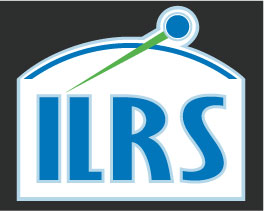Quick Links
- Network Map
- List of Stations
- Monthly Report Card
- Quarterly Report Card
- Network Status Page
- Potsdam CPF time bias service
- Procedure for estimating laser beam divergence
- Recent Station Upgrades
- Network station application form
- Revised ILRS station screening process at ILRS Operations Centers (NASA and EDC)
ILRS Station Upgrade Procedure
The ILRS community must be made aware when stations perform upgrades and maintenance activites since these changes can introduce biases in the data which may take some time to detect. These biases can corrupt our data products and the products developed through combination with other techniques.
Therefore, the ILRS has developed a procedure for stations when these upgrades begin. When stations make a change in the system's components in the signal path or software that is in the data processing path, the station must:
- send a message to the CB informing the CB of the proposed changes
- update the station site log
- update the station configuration log and submit the entire log to EDC
- update the configuration (C-series) records in the CRD-formated files.
The CB will review the site log and let the station know if the data need to be quarantined and if further action needs to be taken.
The CB realizes that sometimes several system changes may happen in rapid sequence. If operational SLR data are sent through the data channels after modification, stations must inform the CB that a change was made. If stations realize they will be going through changes as described above, the CB asks that station personnel please send a message to the ILRS CB PRIOR TO initiating this work to alert the community as soon as the upgrade schedule is known.
Addendum:
Station changes that trigger changes in both SOD number and DOMES number.
The legacy NASA SLR systems plus the European MTLRS-1, MTLRS-2 and FTLRS-1 were all designed for being mobile and thus always occupied a 'real' brass monument. For this reason their system eccentricities were always non-zero and their DOMES numbers for their brass monuments and their system reference point never changed. For these systems, if the system eccentricities changed, they were assigned a new SOD. For the NASA stations, they were also assigned new SODs in the past when there was a major configuration change per the request of the managers of the NASA Crustal Dynamics Project (CDP).
However the 'permanent' EUROLAS and WPLTN stations do not occupy a brass monument. Thus, their system eccentricities are always zero since their system reference point (“intersecton of axes”) is always deemed to be the 'monument'. If a permanent EUROLAS or WPLTN system replaces their mount, there is no way to measure, via a local survey, the location of the intersection of the old optical axes to the location of the intersection of the new optical axes. Thus, in these cases a new DOMES number and SOD number must be assigned. This is essential to avoid any confusion on the part of the analysis community in the analysis of the data, and the derivation of geodetic products.
- NASA Official: Frank Lemoine
- Web Developers: 610 Web Dev
- Contact Us
- Last modified date: Mar 21, 2025
- Privacy Policy & Important Notices




